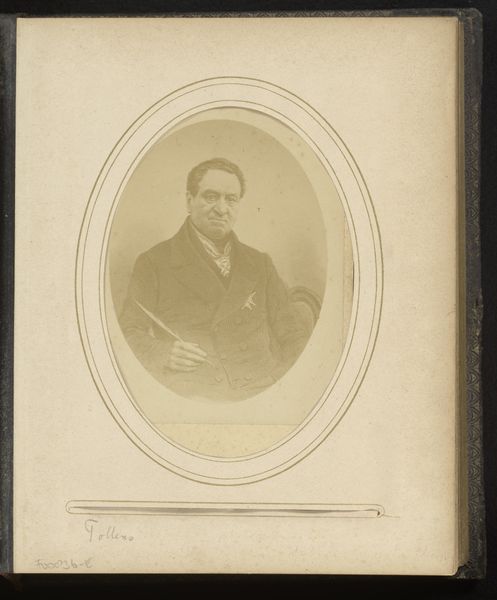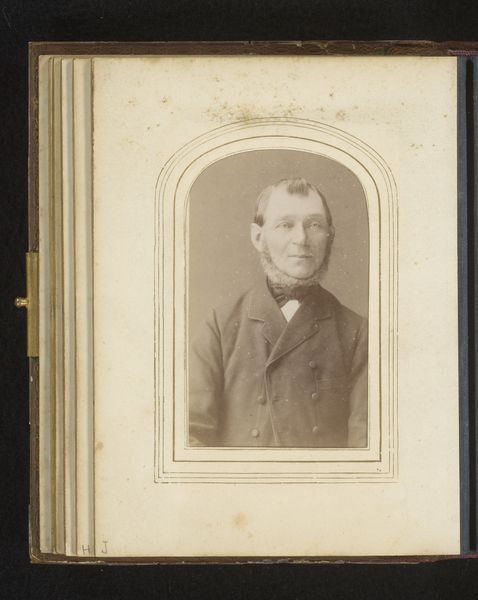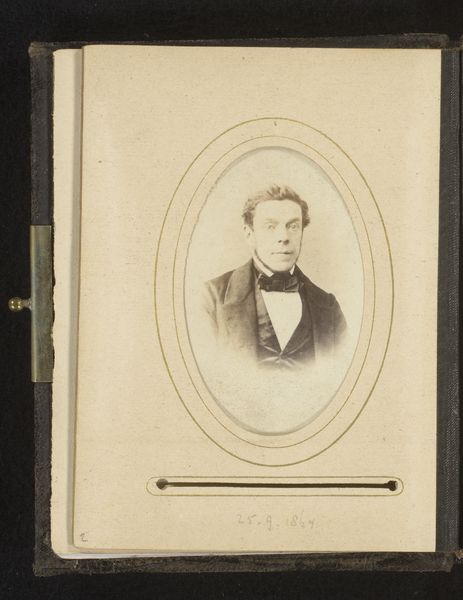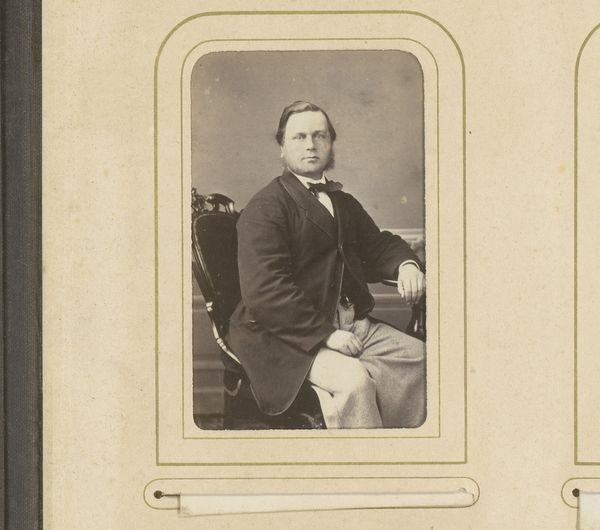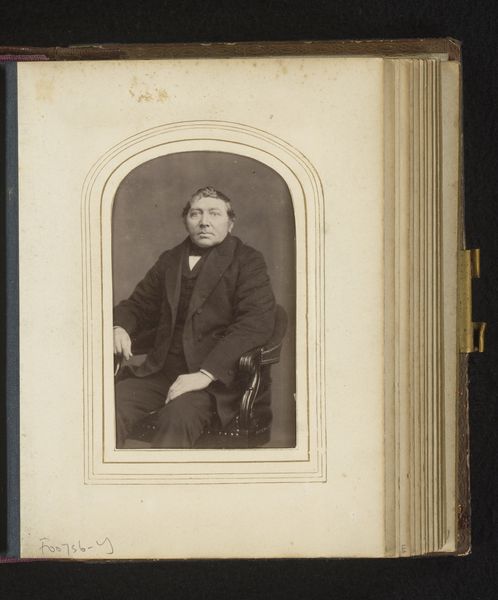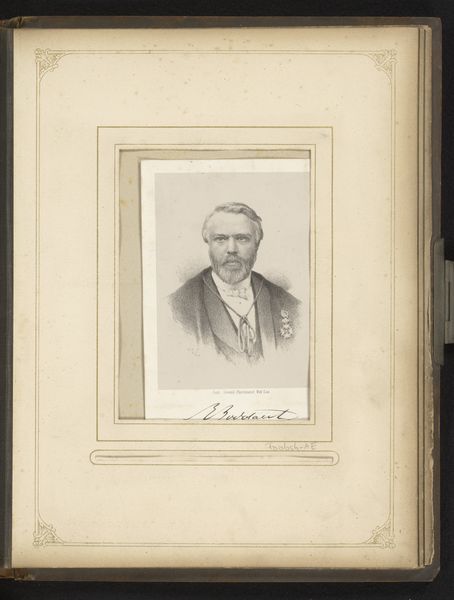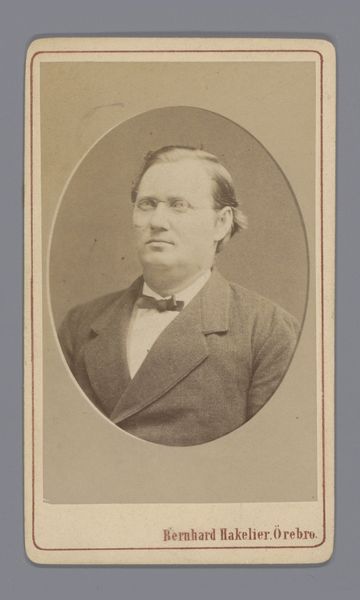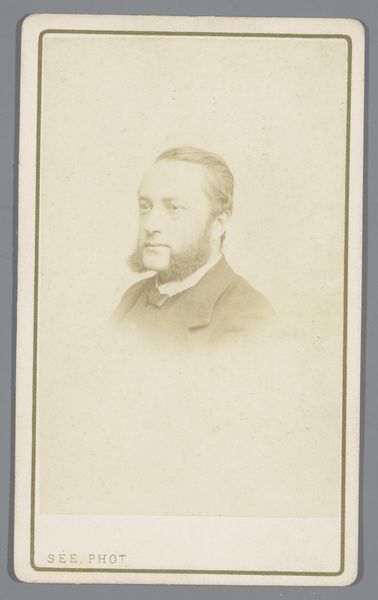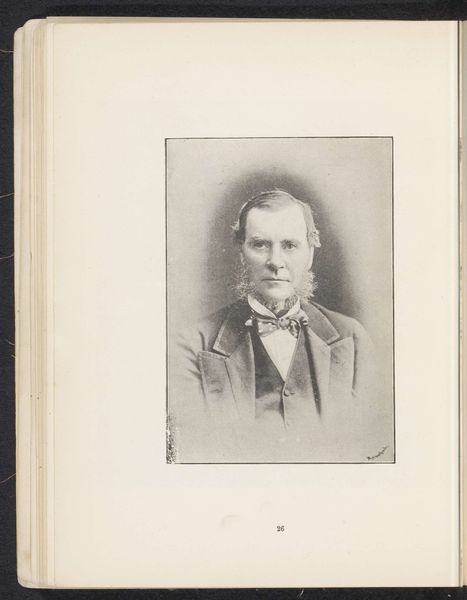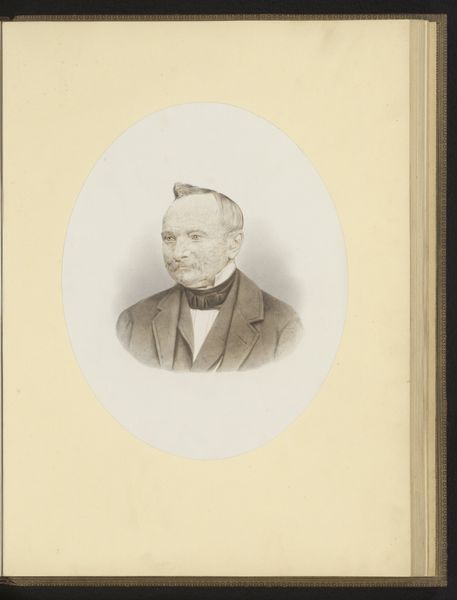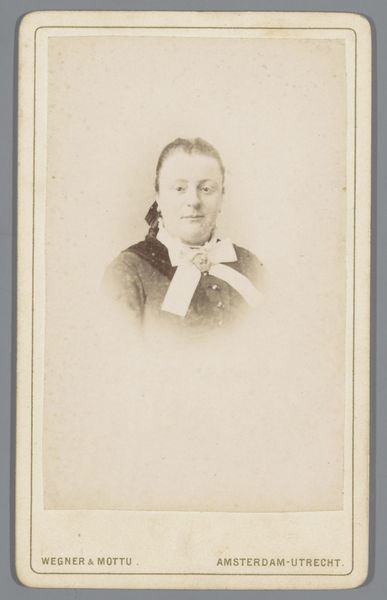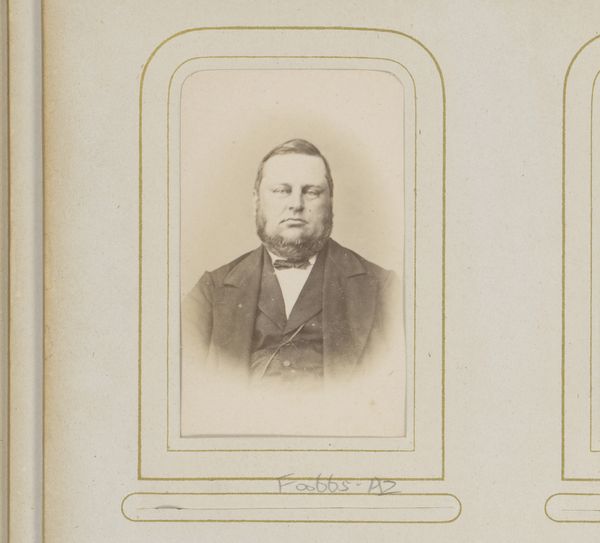
paper, photography, albumen-print
#
portrait
#
paper
#
photography
#
paper medium
#
watercolor
#
albumen-print
Dimensions: height 86 mm, width 53 mm
Copyright: Rijks Museum: Open Domain
Curator: Welcome. Let's turn our attention to this page from a photographic album, titled “Portret van een man,” which translates to “Portrait of a Man,” created between 1856 and 1875 by Johannes Wilhelmus Karsses. Editor: The image exudes an almost palpable seriousness. I’m struck by how the sharp focus captures such direct and intense gaze from the subject, it really defines the photograph's visual mood. Curator: The albumen print process was a dominant technique in portraiture at the time. This kind of portraiture gained momentum along with rising literacy and urbanization, offering people affordable representations of themselves and their loved ones within rapidly modernizing society. Editor: Looking closely at the tonal gradations, the artist, Karsses, created a subtle chiaroscuro effect to model the figure. The composition and arrangement within the paper and frame suggests a careful arrangement for creating an eye-pleasing effect. Curator: Absolutely. The containment of the image within the layers of frames and the album itself further emphasizes this function within intimate domestic settings. These weren't artworks hung in galleries, they were signifiers of social status and memorial tools that helped cultivate middle-class identities. Editor: I find that interesting because the overall impression is somber and direct; less embellished or idealized than some of the painted portraiture from prior eras. His facial features and solemn posture lend it a sense of unflinching realism, capturing a sense of true character. Curator: Certainly, and this is important. Early photography promised direct access to reality; there was a powerful conviction at the time that the camera could record things with unparalleled accuracy, shaping understandings of identity in an age defined by sweeping industrial transformations. Editor: Analyzing solely within the bounds of this specific picture and the techniques of arrangement the photographer has created a powerful sense of austere composure that allows to draw connections between formal construction and historical value, where the two are often interlaced and influencing one another. Curator: Indeed. When we bring both formal understanding and contextual appreciation into dialogue, it can allow for an enriched reflection of how individuals portrayed in these images, lived and expressed their position within the larger social structures that ultimately framed their reality. Editor: An exploration well worth our consideration.
Comments
No comments
Be the first to comment and join the conversation on the ultimate creative platform.
